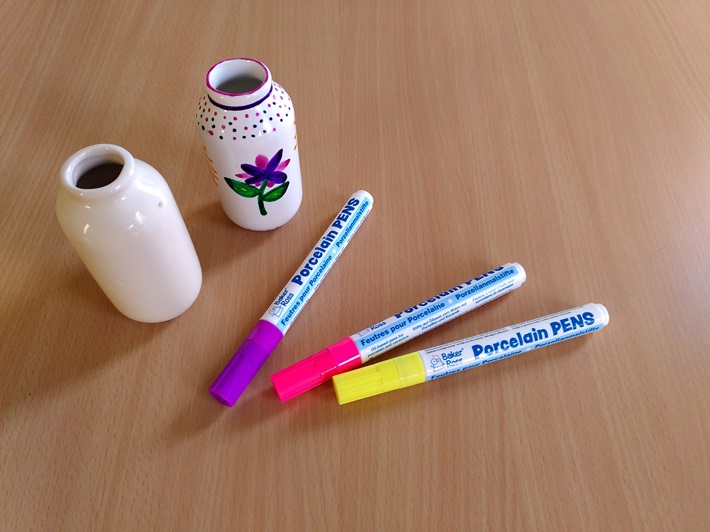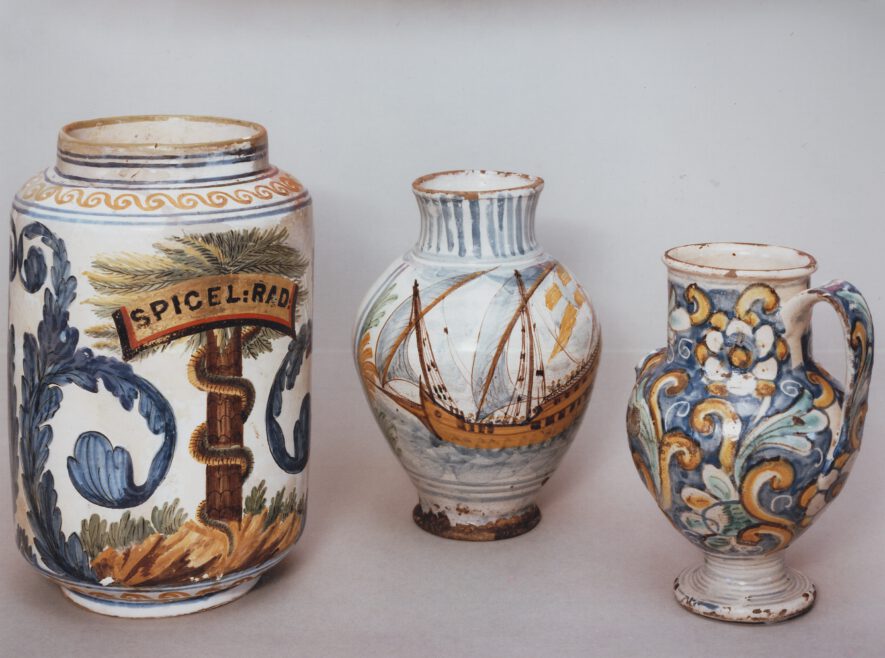At least 1 in 100 people have autism. Over the past few months, we have been working to make our museum more autism friendly. We have invested in new resources, run our first autism-friendly family activity, created visual stories, had autism awareness training for staff, and now we’re looking to the future.
During February half term 2020, we ran our very first autism-friendly family activity at the Museum of the Order of St John. The activities were inspired by the herbal remedies used by the Order at their hospital on Malta, and the pharmacy jars in our collection in which they used to store them. We decorated our own little ceramic jars to take home. Our storyteller, Olivia, told stories about the Order of St John and its work in caring for the sick. She led a trip out into the garden to look at and smell the medicinal herbs that would have been stored in the pharmacy jars. We did another craft activity with her, decorating crowns, swords and shields.
In the gallery next door to the activity room, we set up a quiet room complete with bean bags, cushions, blankets, fidget toys, colouring paper and pens, a jug of water and cups, and our visual stories. This was for families to visit whenever they wanted for as long as they wanted, to take a break from the sensory input in the activity room.
90% of autistic people experience the world through their senses in a different way from neuro-typical people (those who don’t have autism or other conditions such as dyslexia). This means that for some autistic people the sensory input they receive can be overwhelming at times, and so having a quiet space to go to can be helpful. We made other changes to help with this too, such as turning off all the hand dryers in our toilets (the noise from these can be distressing for some) and having ear defenders available (to block out distracting noises).
Some autistic people have difficulty communicating or communicate differently from the ways that neuro-typical people tend to communicate. We therefore also provided communication cards to help the children express what they were feeling during the session.
Everyone who came to the family activity was sent a visual story in advance, which used both text and images to show families what to expect from their visit. This included information about the sensory inputs they were likely to receive, the people they would meet, and the activities they would be doing. Just like neuro-typical people can have difficultly interpreting or predicting an autistic person’s behaviour, so too do some autistic people have difficulty interpreting or predicting a neuro-typical person’s behaviour. It can therefore be helpful for some autistic people to be told clearly what is going to happen.
We now also have visual stories about coming to the Museum to visit at any time and about going on a guided tour of the historic rooms, and these can be downloaded from our website. These are meant for children and adults alike, and not just for those with autism, but for anybody who would like to know what to expect in advance.
Museum staff, including our museum director, curator and volunteer manager, front-of-house staff, office assistant and learning assistants, have all had autism-awareness training, so we can take an autism-friendly approach to all aspects of our work going forward.
We intend to run more autism-friendly family activities in the future, so keep an eye out on our events page. We are also looking into applying for the National Autistic Society’s Autism-Friendly Award, so that we can let more people know about what we have to offer, and make sure we continue to be autism-friendly well into the future. If you have any suggestions about what more we can do, please do get in touch, by sending us an email at museum@sja.org.uk.
This project has been made possible thanks to an Arts Council England-funded Diversity Matters grant from the Museum of London’s London Museum Development.







